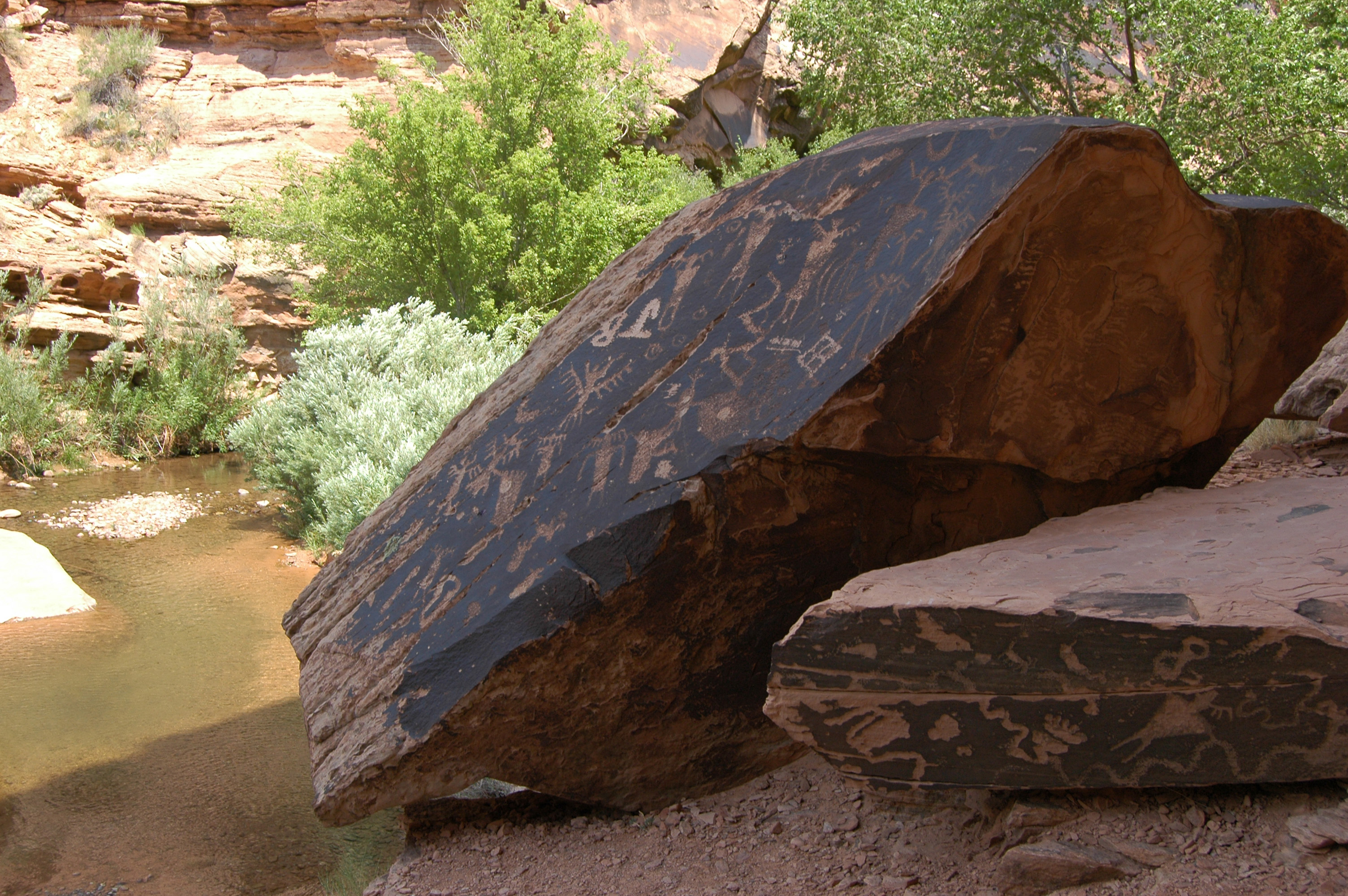
Most sites are from the Anasazi culture, which thrived in the area's incredibly rugged and remote desert canyons. The Anasazi built great houses, square towers, D-shaped multi-story castles and tiny one-room dwellings out of native stone, often right on the edge of sheer cliffs. They grew corn in the poor soil on the edge of the cliffs, and worked clay into sublime vessels with delicate curves and bold colors and patterns. And they described their culture in rock art (petroglyphs) carved into the cliff faces.
These Anasazi canyons are treasures I wish could be hidden from the world. They are silent guardians shielding the ruins of a mysterious and fascinating civilization. Ruins which modern man seems bent on destroying.
 There are dozens of canyons in this area that contain thousands of ancient sites. But these canyons are being "discovered," whether I like it or not; they are becoming popular destinations for hikers and backpackers. Many are located on BLM property — public property — which the public has the right to enjoy.
There are dozens of canyons in this area that contain thousands of ancient sites. But these canyons are being "discovered," whether I like it or not; they are becoming popular destinations for hikers and backpackers. Many are located on BLM property — public property — which the public has the right to enjoy.
And so I reluctantly write about the area, and I sometimes take people to see its wonders, because public awareness — education — offers the only hope of stopping the destruction.
A few of the most significant Anasazi sites have become famous, and received protection from the U.S. National Park Service, including Mesa Verde and Chaco Canyon. They draw hundreds of thousands of visitors each year, and are carefully protected. A fair amount of research has been conducted at these sites, but much remains to be done there.
Other major sites, such as Hovenweep on the Utah/Colorado border, have received little protection or study. Hovenweep is designated a national monument, putting it under National Park Service control, but very little study has been accomplished there. Many of the canyons that contain large numbers of ruins have been declared wilderness study areas. Such a designation restricts development and motorized travel, but does little else to provide protection. Many sites in these canyons have not been studied at all.
I visited Hovenweep some time ago and noticed the National Park Service had installed rope barriers to keep visitors from getting on the ruins, and marked footpaths to keep people from tromping the plant life. I felt mixed emotions as I viewed these "improvements." A year earlier nothing prevented me from walking up to ruins and sticking my head inside, and I consider that a more fulfilling experience. Yet I understand it is necessary to limit individual freedom to protect these sites.
In the remote canyons there are no barricades, no rangers, nobody watching. Individuals must accept the responsibility to safeguard the sites. We must discipline ourselves so we can hike, explore, view and photograph without causing damage — without climbing on walls or handling artifacts.
The BLM needs to do more to protect this natural resource. The agency doesn't seem to realize what it has in these canyons, and how public interest is building — more visitors every year, escalating quickly to an explosive level. BLM needs a plan to accommodate this growing interest.
There are still undiscovered sites in these canyons, some with significant artifacts. Money and manpower must be made available to chart these sites and expand research. Trails should be improved to minimize the impact of hikers. And increased efforts are needed to educate the public about preservation, and to enforce the laws which protect ancient sites.
More restrictive regulations may also be needed. For example, cattle roam freely in many canyons, stepping on artifacts and pushing against rock walls, causing considerable damage.
Americans have been enchanted by ancient civilizations in exotic locations around the world, unaware of the fascinating and unique civilization which thrived in our own backyard. We have a treasure in these wilderness canyons — a treasure which we can enjoy and protect, or neglect and abuse.
It will be years before scientists can work through the rubble and comprehend the significance of many sites. It will be our children or grandchildren who make these discoveries — who come to more fully understand the relics we casually view, and the culture which produced them. If we don't destroy them first!
